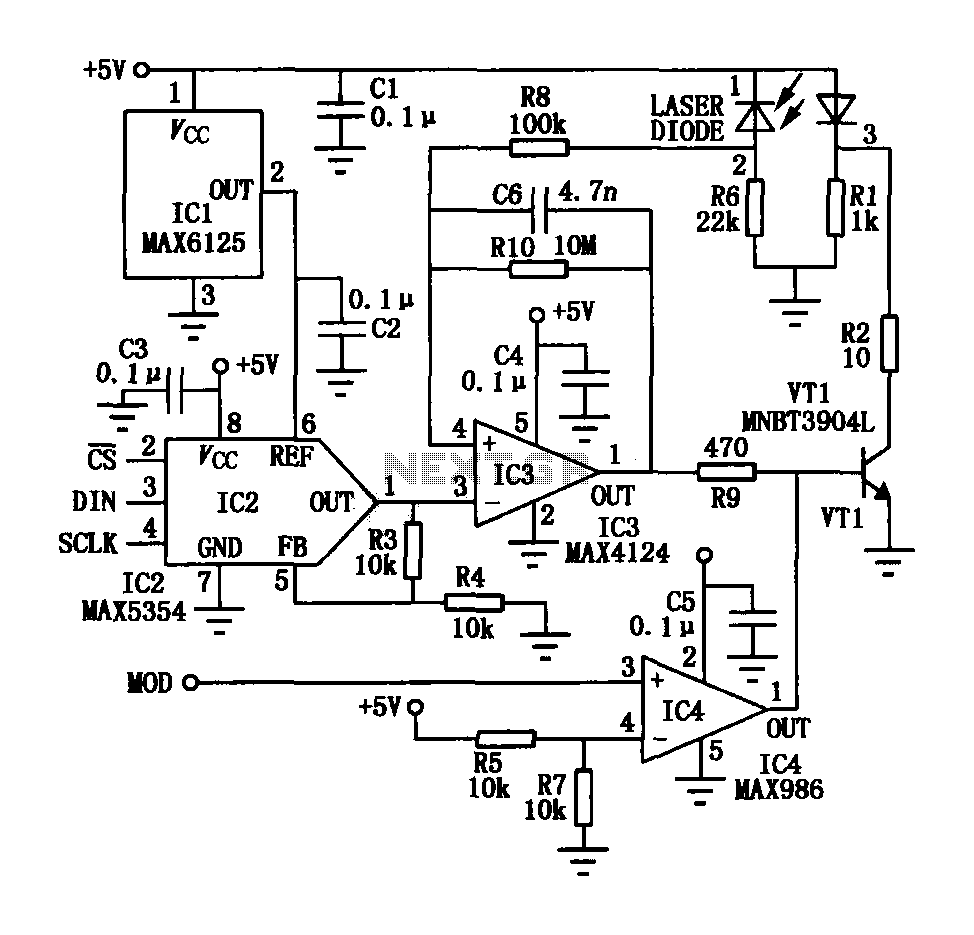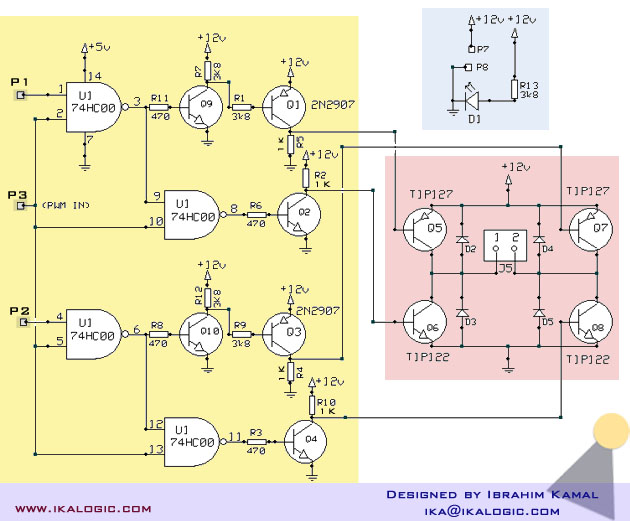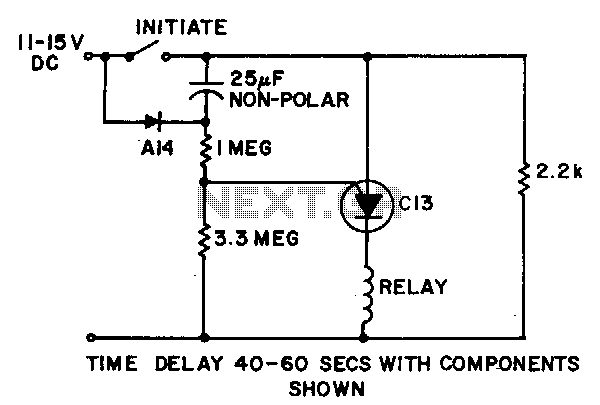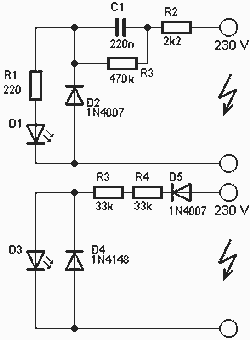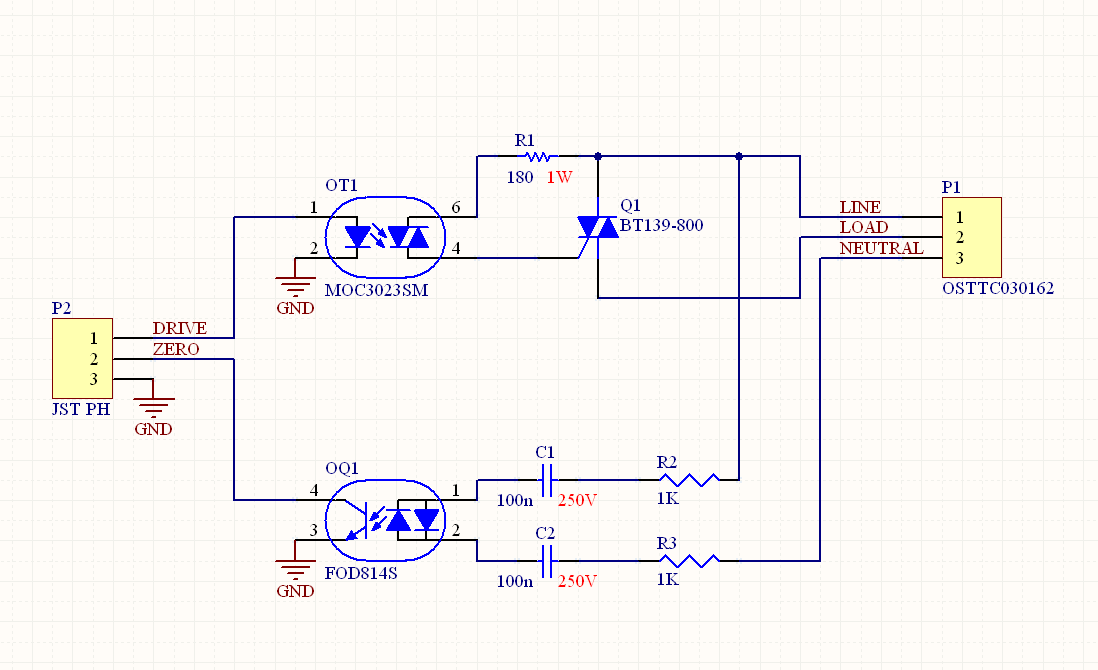
High-speed laser diode driver
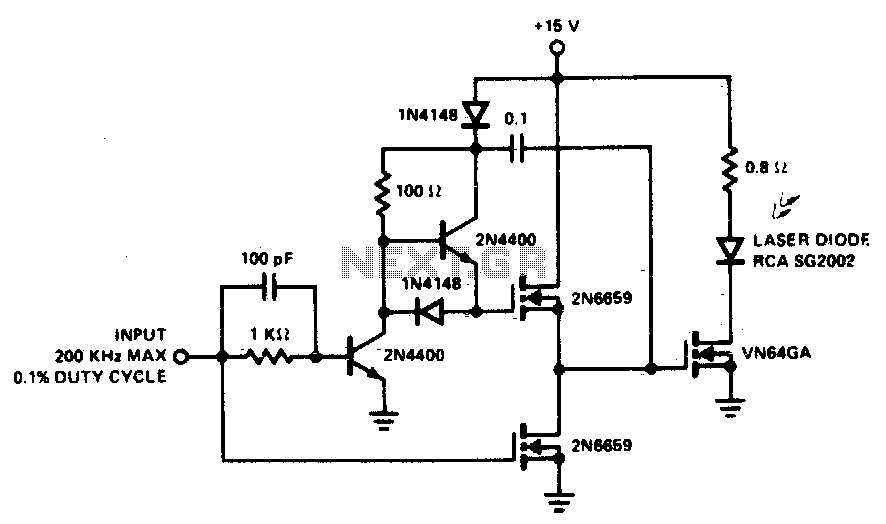
A faster driver can supply higher peak gate current to switch the VN64GA very quickly. The circuit uses a VMOS totem pole stage to drive the high power switch.
The described circuit employs a high-speed driver to enhance the switching performance of the VN64GA, a high-voltage N-channel MOSFET. This driver is essential for providing the necessary peak gate current, enabling rapid transitions between the ON and OFF states of the MOSFET. The ability to switch quickly reduces the switching losses, which is critical in high-frequency applications.
The VMOS totem pole stage serves as a robust driving mechanism for the high power switch. This configuration typically consists of two complementary MOSFETs arranged in a push-pull configuration, allowing for efficient driving of the gate capacitance of the VN64GA. When one MOSFET is turned ON, it pulls the gate voltage up rapidly, while the other MOSFET is turned OFF, ensuring a swift transition. This arrangement minimizes the time the MOSFET spends in the linear region, further reducing heat generation and improving overall efficiency.
In applications where fast switching is crucial, such as in power converters or motor drivers, the careful selection of the driver circuit and its configuration can significantly impact the performance and reliability of the entire system. The integration of a VMOS totem pole stage is a strategic choice for achieving high-speed operation and ensuring that the VN64GA operates within its optimal parameters.A faster driver can supply higher peak gate current to switch the VN64GA very quickly The circuit uses a VMOS totempole stage to drive the high power switch. 🔗 External reference
The described circuit employs a high-speed driver to enhance the switching performance of the VN64GA, a high-voltage N-channel MOSFET. This driver is essential for providing the necessary peak gate current, enabling rapid transitions between the ON and OFF states of the MOSFET. The ability to switch quickly reduces the switching losses, which is critical in high-frequency applications.
The VMOS totem pole stage serves as a robust driving mechanism for the high power switch. This configuration typically consists of two complementary MOSFETs arranged in a push-pull configuration, allowing for efficient driving of the gate capacitance of the VN64GA. When one MOSFET is turned ON, it pulls the gate voltage up rapidly, while the other MOSFET is turned OFF, ensuring a swift transition. This arrangement minimizes the time the MOSFET spends in the linear region, further reducing heat generation and improving overall efficiency.
In applications where fast switching is crucial, such as in power converters or motor drivers, the careful selection of the driver circuit and its configuration can significantly impact the performance and reliability of the entire system. The integration of a VMOS totem pole stage is a strategic choice for achieving high-speed operation and ensuring that the VN64GA operates within its optimal parameters.A faster driver can supply higher peak gate current to switch the VN64GA very quickly The circuit uses a VMOS totempole stage to drive the high power switch. 🔗 External reference
Warning: include(partials/cookie-banner.php): Failed to open stream: Permission denied in /var/www/html/nextgr/view-circuit.php on line 713
Warning: include(): Failed opening 'partials/cookie-banner.php' for inclusion (include_path='.:/usr/share/php') in /var/www/html/nextgr/view-circuit.php on line 713
